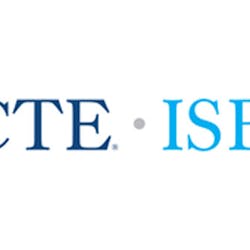The NCTA - The Internet & Television Association has emphasized that, as the U.S. responds to the COVID-19 pandemic, the cable broadband industry is committed to ensuring that Americans will remain connected during this unprecedented societal crisis.
A recent statement by NCTA recapped the cable industry's pandemic response:
Cable internet service providers are intensely focused on providing superior network performance and constantly evaluating how networks will handle the increased demand. In addition to delivering fast and reliable internet service, NCTA member companies have announced new measures to expand internet access, especially for low-income households and families with students that are now learning from home. Additionally, every member company has signed the FCC’s 'Keep Americans Connected Pledge' to reassure consumers that they will stay connected throughout the coronavirus outbreak.
NCTA member companies are also providing over $100 million in public service advertising through June to help prevent the spread of COVID-19 and educate consumers about the impact of the pandemic. Finally, NCTA and its member companies are working closely with federal, state and local government officials to share appropriate information and keep informed of new developments.
Specific efforts in response to the pandemic by cable operators including Comcast, Charter, Cox, GCI, Midco, Mediacom, Service Electric and Vyve Broadband, and other NCTA member companies such as IBM, CommScope and Technetix, have included opening Wi-Fi hotspots, pausing data plans, expanding internet access for low-income families, and more.
“For years, NCTA member companies have been building the infrastructure required to deliver fast and reliable internet service to millions of American families and businesses," noted Bill Check, senior vice president, Technology and chief technology officer for NCTA in a conversation with Broadband Technology Report.
Check continued, "These substantial investments in our networks have prepared us well to keep Americans connected during this public health crisis -- and there is no higher priority for our industry. While no consumer is immune from issues arising from temporary congestion in the home or across the internet, cable ISPs will continue in their efforts to plan for future demand and move swiftly to address issues when they arise, even in the midst of this pandemic.”
The gathering surge
It's no secret that while America shifted heavily to work-from-home and school-from-home environments for the months of March and April 2020, internet traffic skyrocketed.
A report from NCTA's COVID-19 dashboard from the last week of April showed that since March 1 national downstream peak growth was up more than 16%, and national upstream peak growth had increased more than 34%, with some regions of the U.S. seeing upstream peak growth approaching a 50% increase.
While peak growth has plateaued in recent weeks, the reality is that cable’s broadband networks have seen significant surges in internet traffic growth in just this short period of time.
NCTA notes that cable’s networks have been able to handle this surge in internet traffic through a combination of hundreds of billions of dollars in investment in infrastructure and technology ($290 billion over the past 20 years), plus smart and responsive network engineering, reaping the benefits of a flexible network foundation that is being constantly upgraded with hardware, software and other technical modifications.
HFC is key
“A key reason that cable networks have proven so resilient has to do with investment and infrastructure planning," confirmed NCTA's Check. "ISPs prepare for increased internet demands by always staying ahead of the curve, building out their networks and planning the necessary specifications that allow them to operate at high capacity, and constantly upgrading and monitoring the networks to anticipate and correct congestion issues.”
HFC networks have unique advantages in addressing the pandemic-fueled bandwidth surge, according to Check. “HFC is a ‘smart’ architecture that allows for the kind of 24x7 micro-monitoring that broadband providers have been doing during the pandemic," he explained. "By having eyes on every aspect of network performance, engineers are able to diagnose localized issues and often troubleshoot them quickly."
Check added, "The beauty of the HFC architecture is that it marries that power of gigabit-capable networks with an architecture that is extremely efficient and flexible. Network engineers don’t just plan for today, they build networks that accommodate future growth in consumer demand. That planning allows cable’s networks to stay ready and robust in the face of events that may cause internet traffic surges. And the next chapter of cable’s network technology – the evolution of HFC to 10G technology – will continue that trend, eventually delivering 10 gigabit speeds to consumer homes around the globe in the coming years.”
Approaching the 10G horizon
By upgrading existing networks with a combination of new hardware, software and other engineering techniques, NCTA expects that the burgeoning migration to 10G technology will be efficient, in terms of not requiring massive and protracted network overhauls. The association notes that 10G technology will enable not only wired networks, but also fixed wireless and mobile networks to provide a ubiquitous, seamlessly converged communication platform for the future.
Crucially, the rapid development of the DOCSIS 4.0 spec, the first major update to the DOCSIS specification in six years, is speeding the industry's progress toward 10G. The new specification integrates both full duplex and extended spectrum capabilities to give operators flexibility in how to increase network capacity to deliver on the promise of symmetric multi-gigabit speeds over HFC networks.
Additionally, the release of a new 200 Gbps Point-to-Point Coherent Optics specification, a critical component for enabling 10G's interconnected future, will aid operators in leveraging the next generation of silicon for new networking equipment slated to arrive throughout this year. Such new devices will double the capacity of the cable access network, utilizing existing fiber to enable the enhanced services and experiences promised as a part of the 10G value proposition.
As envisioned in a recent joint statement from NCTA – The Internet & Television Association, CableLabs, SCTE•ISBE and Cable Europe (now GIGAEurope), "10G means more than blazing speeds – lower latency, higher reliability and better security are also built into the network. This powerful combination will enable next-generation technologies and applications...from super high-definition streaming and gaming to holodecks and light field displays, 360° video, video walls for work and AR applications that will help our children learn and collaborate and all the demands of an IoT future."
Kudos to cable's workforce
In conclusion, NCTA's Check was quick to emphasize that one of the most important reasons for the success of broadband's resiliency in this time of COVID-19 involves the hundreds of thousands of essential personnel "that have been working around the clock, with longer hours and more demands than ever before," to keep the networks running.
"From call center employees working out of their homes to field technicians out in communities doing repairs or network augmentations, the collective effort of cable's workforce has never been more important," said Check. "After all, cable's network is a physical infrastructure that needs monitoring, maintenance, repairs -- new hardware and other measures -- to ensure it delivers the optimal experience.”
While we can only speculate about when or what the post-pandemic world will bring (see "What happens after the pandemic eases?"), we can expect that the demand for high-speed internet will only continue to grow as business models change, more employees work from home, more workers and students rely on video conferencing, and more large events become virtual gatherings.
It's more than fortuitous that the cable industry’s technology roadmap and HFC network was designed from the ground up for this very type of expansion in bandwidth usage.









